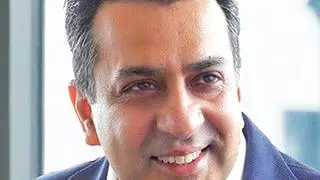India as a talent pool and a market for design automation' is one of the topics that Rahul Arya — Director of Marketing & Technology Sales in Cadence Design Systems (I) Pvt Ltd, Bangalore ( >http://bit.ly/F4TRahulArya ) — brings up during a recent interaction with eWorld.
Talent is of essence in a knowledge-intensive sector such as electronic design, he begins. “India produces a large number of electronics and computer science graduate engineers every year. While there is no dearth of manpower, the challenge is in finding ‘design aware' engineers who are trained specifically in VLSI (Very Large Scale Integration) design and who can ramp up quickly. Simply put, the industry is facing a ‘quality gap' with regard to talent.”
Acknowledging that there are several courses on offer to students for augmenting their college learning with specific VLSI design training, and for bridging the gap to some extent, Arya adds that to correct the gap in the long-term, there are several lessons we can learn from educational institutions abroad. Such as, facilitating industry interactions, focusing on research, bringing an application-orientation rather than a theory-focused approach, and encouraging an entrepreneurial mindset, he elaborates. Our conversation continues over email.
Excerpts from the interview.
Were you to trace the growth of design automation over the decades, what are the three or four key stages in its evolution?
From the technology perspective, electronic design automation (EDA) has made considerable leaps over the past two decades – from manual drawing of the transistors, to basic tool sets, to today's advanced flows and methodologies that help increase productivity to meet today's tight time-to-market windows.
Today, semiconductor makers are facing projected SoC (System-on-a-Chip) development costs of $100 million at 32 nm (nanometre) and below. One result of these pressures is that fewer companies will be design creators and more will become integrators who make heavy use of pre-designed IP (intellectual property), including both hardware and software.
The needs of integrators are different from those of creators. Creators are concerned about productivity gap whereas integrators are more concerned about a lesser-known profitability gap. There is a need for EDA to evolve and to close that gap by enabling integration-optimised IP creation and selection, IP integration into SoCs and systems, and system cost optimisation.
From the business perspective in India, the Indian semiconductor ecosystem evolved in its first avatar 1.0 on the platform of cost arbitrage. With pioneers setting up their India Design Centres (IDCs) over 20 years ago, the world started to look at India as a nation with burgeoning engineering talent.
India 2.0 saw companies moving up the value chain by owning up end-to-end designs and enjoying a greater sphere of influence. Over the years, IDCs established themselves through consistent execution and by building up competencies in areas such as software and hardware design, and embedded design. To take India 2.0 a step further, there are several companies that have moved to product definition and development, especially keeping the local and other emerging markets in mind.
In the next avatar of India 3.0, systems companies are finding differentiation and value through the creative, innovative applications or “apps” that end consumers are demanding.
This is true not only in the mobile handset world, where iPhone and Android are obvious examples, but in any sphere where there's a processor. With opportunities in infotainment, telecom, space and defence, the mindset change – from being chip design “creators” to system design “integrators” – will be the way forward.
Your views on the research work in Indian campuses among the academia.
Research work is accorded priority at most top engineering schools in developed countries, and they get grants from the industry to pursue research. Such industry-academia partnerships are not fully developed in the Indian education system. As a result we have a number of fresh graduate engineers who have a mindset that veers towards solving operational problems but not necessarily a mind that is attuned to original or abstract thinking for problem-solving.
Students abroad also find value in pursuing doctoral (PhD) degrees because the career opportunities encompass both academics and industry, both of which are attractive options in terms of prospects, compensation and job satisfaction.








Comments
Comments have to be in English, and in full sentences. They cannot be abusive or personal. Please abide by our community guidelines for posting your comments.
We have migrated to a new commenting platform. If you are already a registered user of TheHindu Businessline and logged in, you may continue to engage with our articles. If you do not have an account please register and login to post comments. Users can access their older comments by logging into their accounts on Vuukle.